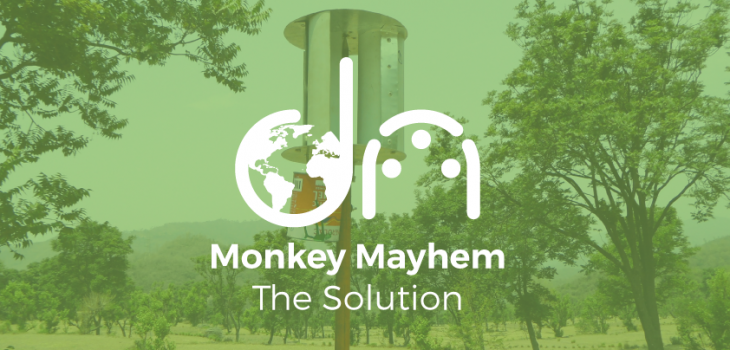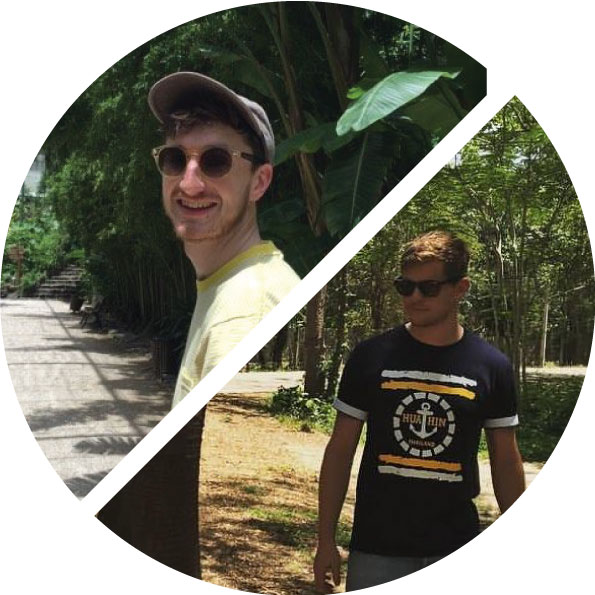 Blog
Blog
Monkey Mayhem – The Solution
Monkey Mayhem - The Solution
“The complete solution consisted of three individual components...”
18th September 2019 - Design for Need, Project, Monkey Mayhem, Solution
By Finn Brownbill and Matt McClumpha
Through learning and listening to a variety of people (see our previous blog), it was evident that the problem was far greater than anticipated. With deforestation, over grazing and forest fires being the main sources of the problem, it was hard not address these issues in the solution. The original brief was to ‘design and implement a device which would protect a variety of crops from wildlife ensuring it is non-harmful, active 24/7 and works with wildlife rather than against it’. However this was later changed not only to include a device but a solution which would also target the source of the problem. With this in mind and the help from the community and RUCHI, a local solution was developed which would be low cost, sustainable and long-lasting.
The complete solution consisted of three individual components; population control, buffer zones and crop protection. Each of these components have been carefully considered and work in harmony with one another to ensure a long-term sustainable solution, however if one of these elements is not taken into consideration it could result in a harmful side effect as shown in the infographic below.
The first step of the solution is population control. This may sound cruel but it’s not all about killing off the population, it’s about keeping the population balanced which could involve raising population size as well. If the wildlife population is too low, this could result in the destruction of ecosystems, lack of biodiversity and decline in food sources. However, too high of a population could also have severe effects on the natural environment, from food exhaustion to diseases spreading. Controlling the population at a sustainable level ensures that both the wildlife and farmers can live harmoniously with one another without negatively affecting the natural environment.
The second step is to introduce ‘Buffer Zones’, this involves replanting a variety of trees which have been lost to deforestation. This would replenish food-stocks and revive natural habitat for wildlife. The types of trees would need to be diverse, varied and easy to cultivate, the rhesus macaque alone consumes 99 different plant species. An example of the trees that could be planted is the Kachnar tree, standing at 10-12m tall, this tree has bright pink/white flowers which are edible as buds.
According to the local community, the wildlife will migrate from village to village every 2-3 days to raid crops, residing in the forests during the night. To entice wildlife tomain Buffer Zones and to disrupt the current migration pattern, Trail (smaller) Buffer Zones could be introduced to lead wildlife to the main areas. The Trail Buffer Zones would then act as a bridge between the main Buffer Zones, allowing the wildlife to migrate between zones without passing through villages and farmland, as seen in the infographic below.
The final step of the solution is to implement crop protection methods, in order to divert wildlife away from farmland. Even with replenished food stocks from Buffer Zones, wildlife (in particular monkeys) can be very opportunistic and will often go for the easiest food source to them which may happen to be farmland. Non-harmful, sustainable methods could include farming inedible spices such as chilli ginger, garlic, turmeric and chilli however these plants rely heavily on irrigation. Other methods could include growing areas with scented plants such as marigolds, as the smell can be unpleasant to wildlife.
Through collaborating with the community and prototyping different designs, the wind turbine prevailed as the best solution (as seen below). This simple, yet effective design uses renewable energy to create an around-the-clock sound to deter wildlife from crops, diverting them to Buffer Zones. The lightweight frame rests on a small point, reducing the friction thus allowing it to move in minimal wind. The vertical-axis wind turbine is omnidirectional, meaning it accepts wind from all directions and requires less components making it easy for the local community to build and repair the turbine indefinitely. The wind turbine is also built from only four local materials and two fasteners, meaning it is low-cost and can be easily replicated to scale to any farm. The riveted panels that attach the blades to the frame reflect sunlight as it spins, causing bright flashes of deterring light. Finally, the adjustable height allows any object to be attached to the pole (not an old paint can), this prevents the wildlife becoming accustomed to the sound.
And there you have it, the complete solution to the monkey mayhem problem. Although this sustainable solution isn’t as quick-fix as we first anticipated it to be, it is one which will be beneficial for the wildlife, environment and the community and will last for many, many years to come. Hope you enjoyed reading about the solution, in the next and final blog you’ll get a peak behind the screens about the design process involved with this project.

Finn and Matt
Both founders Matt and Finn occasionally join forces to write articles together, like this one. Because two heads are better than one. Enjoy!